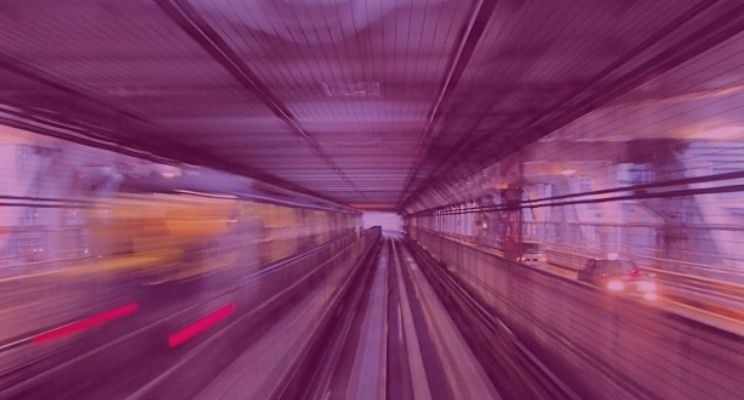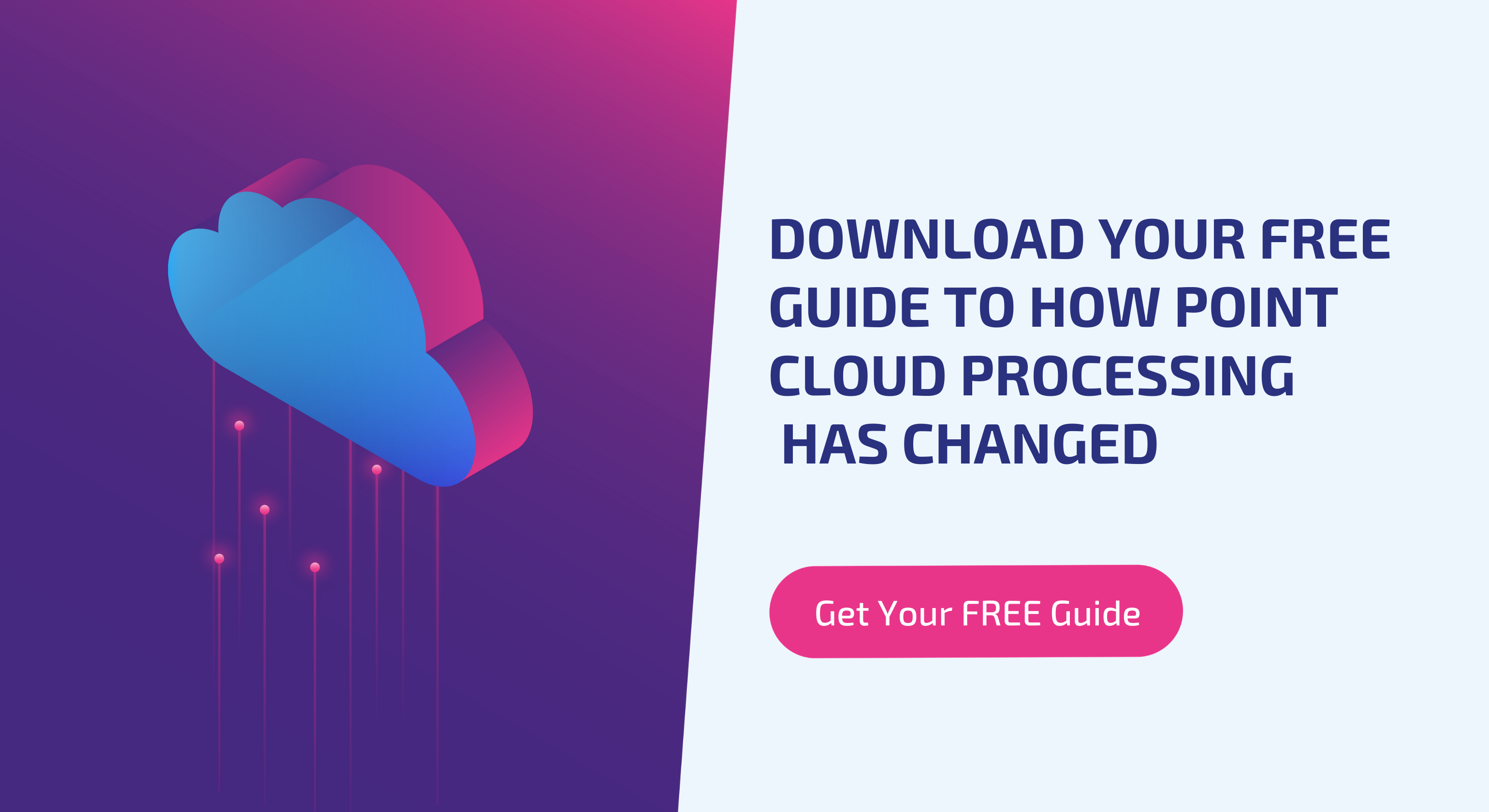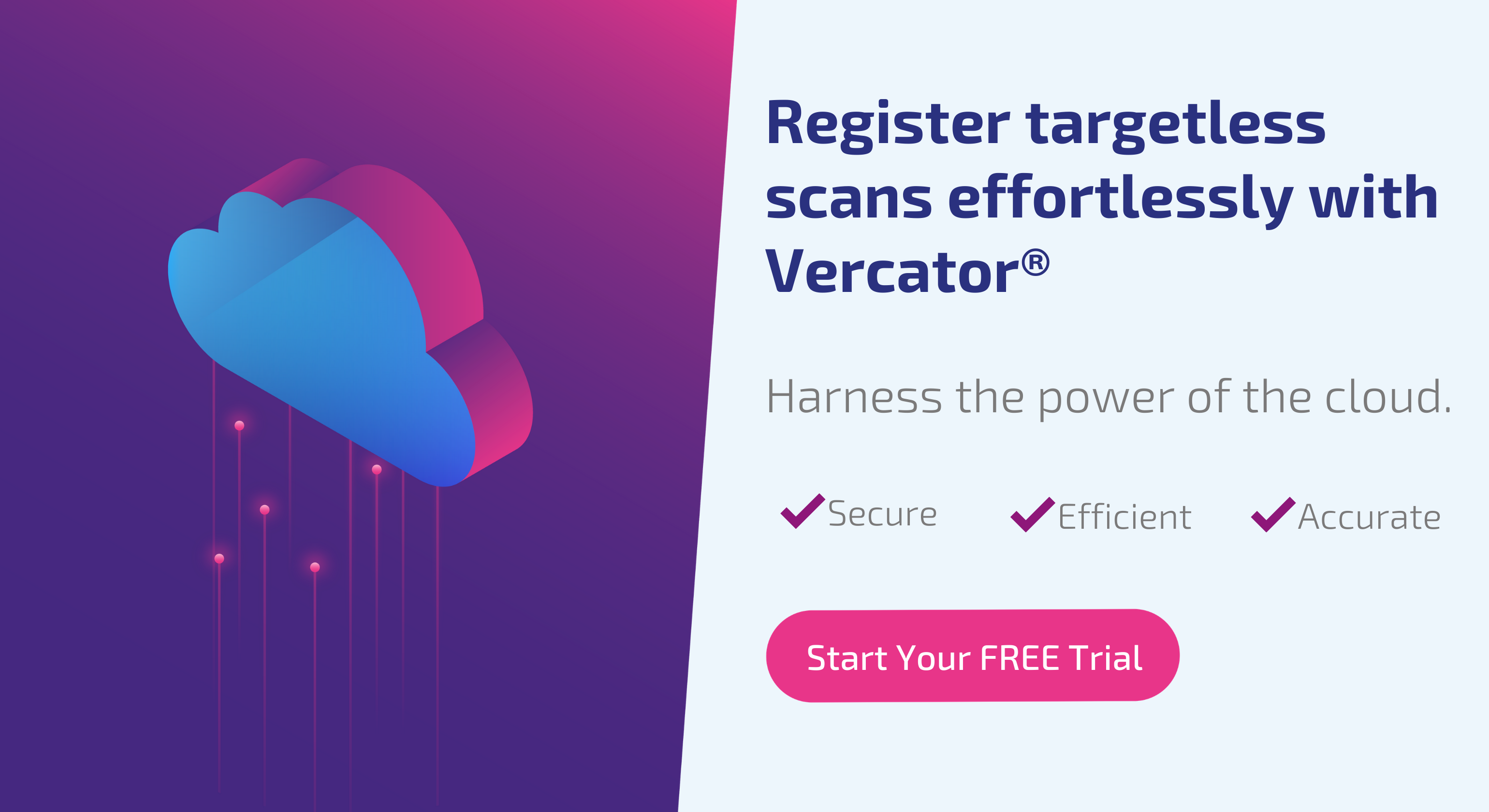LiDAR point cloud registration: 6 acceleration tips for surveyors

LiDAR and point clouds have transformed surveying. Prior to the 1990s, when laser scanners entered commercial use, the kind of ‘reality capture’ outcomes that the industry now takes for granted where simply impractical.
Meticulously and manually measuring the contours of three-dimensional space in millimetre (or even centimetre detail) may not have been practical or possible without LiDAR. But that does not mean that the accurate production of point clouds and 3D models based on laser scans has ever been easy, fast or cheap. There is a reason that the application of this technology has never been widely deployed — until now.
The processes of creating an individual laser scan is simple enough, but, as any surveyor knows, gaining total scene coverage requires far more than one scan. To then transform the dozens (if not hundreds) of scans required into a single, joined-up and complete survey can be as time-consuming and technically challenging as capturing the scans in the first place.
‘Registration’, or ‘alignment’, needs to be approached deliberately if you want to optimise the efficiency of your processes and maximise the kinds of situations in which LiDAR can be cost-effectively deployed. Here, we are going to run down the basics of a good registration framework, and then dive into some of the leading-edge technologies that are transforming how registration is being undertaken in 2020 and beyond.
1. Plan and minimise the number of scans
The fewer scans that you need to register and process, the faster the operation will be. On one level, the number of scans required to complete a job is out of your hands. But you can make sure that you don’t make your job harder by capturing scans with too high a point density than required.
Space your scans out to gain maximum coverage. Look at the ‘lay-of-the-land’, mark down the challenging spots to cover, and make sure that you deliberately place scans to cover those areas without having unnecessary overlap across adjacent scans.
There is always and art to obtaining sufficient scan overlap; without over-scanning. Finding a balance between the use of targets vs natural features within the cloud. This may be dictated in a lot of cases by the geometry of the area being scanned, the scanner being used, the level of detail required and the software deployed. We are going to go into most of these in greater detail. However, the basics remain the same: by considering your specifics, you can minimise the number of scans required and accelerate the registration process.
2. Make sure not to over-deliver on precision
You always need to make sure that you deliver the level of detail and precision required to meet the specifications of the job at hand. However, if you over-deliver, you will waste time and resources. This doesn’t only relate to the registration process (impacting how long it takes to capture scans in the first place and the IT resources needed to store the files), but it’s important to consider if you want to optimally accelerate your registration process.
Scans containing a lower level of detail (LOD) can be registered faster; lower density scans contain less data and are therefore smaller files. Allowing them to be processed faster by less powerful hardware.
It has to be remembered that if you seek to limit the scan LOD too much, you will under-deliver on what is required, and be forced to rescan your entire data set.
3. Consider the pros and cons of targetless registration
Targetless registration is an interesting factor to consider when looking to accelerate registration. By forgoing the placement of registration targets, you accelerate the scanning process. However, you can also slow down the post-scanning registration of your data sets — particularly using standard processing software.
Deploying standard hardware and software, the overall impact on the end-to-end development process is hard to determine. The specific challenges of placing registration targets throughout the area in question will be the big factor impacting which choice will ultimately be the best overall solution. However, if you are solely interested in accelerating post-scanning ‘registration’, using scan targets is, traditionally, the better bet. “Traditionally”, however, is key. The registration software you choose to use can turn this equation on its head.
4. Use dedicated registration software
When it comes to registration, the software you use has a huge impact. As we have suggested, it can impact your ability to engage with targetless registration. It can impact the level of scan overlap required. It can accelerate the entire registration process. On a job-by-job basis, you might not have direct control over this. However, in the long-run, this is the most important factor impacting the speed of registration.
A big change over the last decade in LiDAR technology has been the stabilisation and standardisation of laser scanners. The discrepancies between specific scanners have diminished, allowing third-party developers to invest in the creation of specialised registration software. This is rapidly evolving best practices for registration.
A prominent example is multi-stage, vector-based algorithms. This involves the extrapolation of each point within a point cloud into a directional vector, allowing point clouds to be collapsed into ‘vector spheres’ without losing their identifying and unique characteristics. With a vector sphere, rotational alignment can be achieved independently. Once rotational alignment is confirmed, rapid 2D point density comparisons can be deployed to deliver horizontal and vertical alignment. This is faster, more robust and requires fewer manual cross-checks than standard algorithms.
The important takeaway is that these advanced algorithms can accelerate the standard targetless registration process by 40%-80% while reducing manual inputs. Scans can be used for hand-off registration, and the cost of ‘going targetless’ is completely mitigated. What’s more, these same solutions reduce scan overlap requirements, often allowing you to keep to the minimum 30%.
Point cloud registration solutions packaged within an end-to-end 3D modelling suite, or that come as a standard addition to hardware, are often not on the leading edge of development. However, regardless of the provider, looking to your software as a means of accelerating your point cloud registration process should be central in your wish to increase efficiencies as a surveyor.
5. Upgrade to cloud-based software
The point cloud registration software you use doesn’t only impact the algorithms deployed, it impacts the environment in which processing takes place. Increasingly, point cloud processing software is getting a ‘cloud upgrade’. This brings power, dynamic scalability and flexible access — all of which can accelerate your registration speed. Again, these are features you most often find in dedicated registration software. But it’s the benefits that are important to understand.
Multi-thread processing: Different types of point cloud registration software are capable of ‘parallelising’ tasks. That means multiple elements of coarse and fine registration can be undertaken simultaneously if the compute resources are available. Using standard hardware, this means taking advantage of multi-core processes and muti-thread processing within those cores. However, using standard computers, this often limits parallelisation to a dozen or two tasks.
The cloud introduced the interesting possibility of limitless scaling of CPU cores. Every cloud terminal is effectively hooked up to a super-computer. When needed, you can scale up your cloud access to parallelise tasks in an environment where bandwidth is the only real limitation.
The power of cloud-based processing to accelerate registration is obviously impacted by your specifics. But, generally speaking, it scales with the size of the project. Large and high-density projects (say more than 100 scans) can see more than a 20 fold acceleration in the cloud, even when deploying advanced processing algorithms.
On-site registration: The second accelerating benefit of cloud-based registration is on-site registration. When connected to the cloud, you can start the registration process as soon as the scans are finished. The power of this on-site registration is limited by connectivity. However, with the roll out of 5G, you should expect to see this become more common and more useful. If you want to prepare for the future of point cloud registration, you need to upgrade into the cloud.
Planning and technology are the keys to speed
There is no one factor delivering the fastest registration process possible. But by limiting the number of scans you collect, reducing detail and then investing in leading-edge multi-stage algorithms and cloud-based processing software, you can massively accelerate point cloud registration.
Getting ready for the future of surveying increasingly relies on overcoming the hurdle of registration. This has historically been the ‘time-hole’ that limits the effective deployment of LiDAR in a wider number of use cases. With new technology on the table, the efficiency gains are opening up the use of reality capture and point clouds to industries not before capitalised. As BIM becomes standard in construction, the power of both technologies and processes to interact makes the ROI even greater. Capitalising on those opportunities requires efficiency, and a combination of diligent planning and tech investments are what stands behind that growth.
Tags: LiDAR


